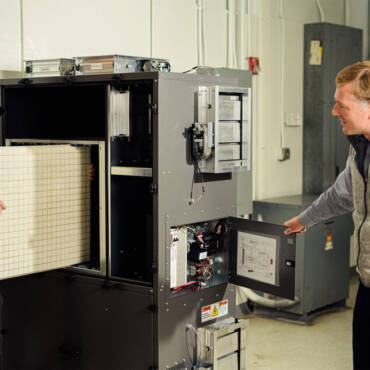CO2 refrigeration is rapidly gaining traction worldwide and for good reason. Unlike traditional refrigerants that contribute significantly to global warming, CO2 is a natural, non-toxic alternative with minimal environmental footprint. With a GWP of just 1, CO2 refrigeration offers a sustainable solution to drastically reduce ozone depletion and mitigate climate change.
Shift To Natural Refrigerants
Historically, HFCs have been widely used in refrigeration and air-conditioning systems. However, these synthetic chemicals are classified as climate “super-pollutants” due to their exceptionally high heat-trapping capabilities — often hundreds to thousands of times greater than CO2. While originally developed as a replacement for CFCs and HCFCs, HFCs have since emerged as one of the fastest-growing contributors to greenhouse gas emissions globally.
According to the Environmental Protection Agency (EPA), refrigeration systems in a typical U.S. supermarket contain approximately 3,500 pounds of refrigerant and have an annual leak rate of around 25%. This translates to an estimated 875 pounds of HFC emissions per store annually — equivalent to emissions produced by over 336 cars in a year.
Recognizing the environmental impact of HFCs, Congress passed the AIM Act in 2020. This legislation mandates an 85% reduction in HFC production and consumption in the U.S. by 2036, promoting the adoption of eco-friendly refrigerants such as CO2. The phasedown approach aims to systematically decrease the availability of HFC refrigerants over a 14-year period. This transition will likely lead to shortages and increased costs for commonly used HFC refrigerants such as R-404A and R-507A, reinforcing the urgency for businesses to explore alternative solutions.
Benefits
Beyond its environmental advantages, CO2 refrigeration also presents a compelling financial case. The cost of traditional refrigerants has tripled in the last two years, making the shift to CO2 systems a strategic investment. Although the initial upgrade involves some expense, CO2 refrigeration systems provide long-term savings through increased energy efficiency, delivering up to 10% more energy savings compared to HFC parallel rack systems. Furthermore, CO2 systems require less maintenance, reducing the total cost of ownership (TCO).
Due to these benefits, CO2 refrigeration has been gaining momentum with major retailers already making the switch. Additionally, natural refrigerants like CO2 are exempt from EPA Section 608 regulations, alleviating some of the compliance burdens associated with traditional refrigerants.
Food retailers considering upgrading their refrigeration system should begin by evaluating their current setup to determine the feasibility of implementing CO2 refrigeration. Engaging an experienced service provider that has expertise in CO2 systems is crucial for ensuring a seamless transition, from design and installation to ongoing maintenance. For example, Smart Care can develop a customized strategy that embraces the future of refrigeration, as we’ve helped cold storage facilities and grocery and convenience stores around the nation make the switch.
While the switch to CO2 refrigeration may seem complex, it is a proven, forward-thinking solution that enhances sustainability while optimizing operational efficiency. As environmental regulations become more stringent, adopting CO2 systems will not only help reduce an operation’s carbon footprint, but also safeguard the business from future regulatory challenges.
Whether you require installation, repair, or maintenance, our technicians will assist you with top-quality service at any time of the day or night. Take comfort in knowing your indoor air quality is the best it can be with MOE heating & cooling services Ontario's solution for heating, air conditioning, and ventilation that’s cooler than the rest.
Contact us to schedule a visit. Our qualified team of technicians, are always ready to help you and guide you for heating and cooling issues. Weather you want to replace an old furnace or install a brand new air conditioner, we are here to help you. Our main office is at Kitchener but we can service most of Ontario's cities
Source link



